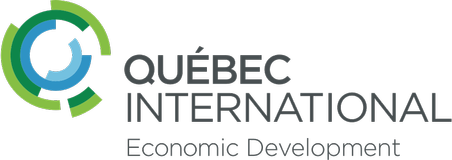Summary
After the unprecedented disruption to the labour market in 2020, the region returned to growth in 2021. It had its best annual performance in more than a decade despite this second year marked by health restrictions. However, this rebound in employment is a catch-up from the previous year’s drop and a lag remains compared to the record year of 2019.
Labour scarcity has remained a topical issue throughout most of the pandemic, and the phenomenon is tangible in the Québec City census metropolitan area (CMA). On the one hand, it is observable in the data; Québec City closed the year 2021 with the lowest unemployment rate from coast to coast (4.2%) and the number of job vacancies has continued to grow. On the other hand, businesses are experiencing labour scarcity, with a recent survey1 revealing that nearly 9 out of 10 employers reported difficulty recruiting workers in 2021.
This 2021 report paints a picture of the industries, occupations, or categories of workers that have “gained” or “lost” ground this year and since the beginning of the crisis. In addition, the analysis looks at the impact of population aging on labour market participation. It is well known that aging puts downward pressure on the region’s participation rate and restricts its potential labour pool. In 2021, the number of people leaving the labour market outnumbers those entering it and this will continue until 2029.
Outlook
The Québec City region concluded the year 2021 with a mixed report. Under the circumstances, employment returned to growth despite the disruption caused by the lingering pandemic. Although the pandemic shock has subsided, the comparison with the record year of 2019 remains unfavourable.
The last two years have not alleviated the labour shortage experienced by businesses, as most indicators show. This will continue to be the case in 2022, while the Conjoncture 2022 survey report revealed that recruitment and retention of labour are the main concern of the entrepreneurs surveyed (56%). Nevertheless, the Conference Board of Canada’s forecast for 2022 estimates that employment in the region will increase by 2.5%, higher than the average increase (+1.3%) recorded in the five years prior to the pandemic (2015-2019).
The aging of the population underlies many of the challenges to which our society will have to adapt, including labour scarcity. This raises questions about the growth potential of the Québec City labour market in the coming years as the number of people leaving the labour market is expected to outnumber those entering it until 2029.
This phenomenon cannot be reversed, but it has the advantage of being predictable over time and therefore leaves room for adjustments to mitigate its impact. Among the tools at our disposal are the retention of older workers and the inclusion of underrepresented segments of the population such as immigrants. Increasing productivity is one of the solutions that will help to address, at least in part, the challenges of labour scarcity and preserve the standard of living in the region.




